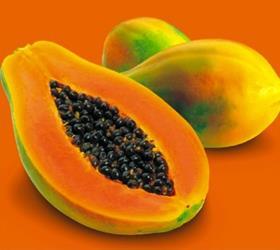
After an exhaustive research project, genetically modified (GM) papaya will soon be on supermarket shelves in Japan as it already is in the US, Western Farm Press has reported.
Dennis Gonsalves, director of the US Department of Agriculture's Pacific Basin Agricultural Research Center in Hilo, Hawaii, said Hawaii had won approval to market a GM food crop in the US and Japan, the first agricultural sector to achieve such access.
Papaya is the second largest fruit crop in Hawaii and it is grown commercially for export to the US mainland and Japan. Hawaii exports 25-30 per cent of its papaya to Japan.
However, papaya trees can be severely damaged by the papaya ringspot virus (PRSV), the worst disease threat to papaya cultivation.
PRSV was discovered in Hawaii in the 1940s and it obliterated production on Oahu in the 1950s, causing the industry to shift to the Puna district near Hilo in the early 1960s.
Most scientists realised the disease would eventually reach Puna, and a research project was started in the late 1980s to develop a PRSV-resistant GM papaya.
The first promising transgenic papaya was created in 1991 and a field trial was initiated on Oahu the next year, the same year PRSV was first detected in Puna.
Fortunately the trial was a success, because by late 1994, almost half of Puna's papaya acreage was infected and farmers were going out of business.
The industry approached US food safety authorities and won approval to commercialise GM papaya, and a year later transgenic seeds were available to growers.
The growers then turned their attention to winning Japanese market access for the GM papaya, a tough ask given Japan's usual reluctance to accept transgenic produce.
Mr Gonsalves said Japan's regulatory approval process was tough, but Hawaiian papaya growers won Japan's export approval and the country will begin accepting GM papaya this year.






No comments yet